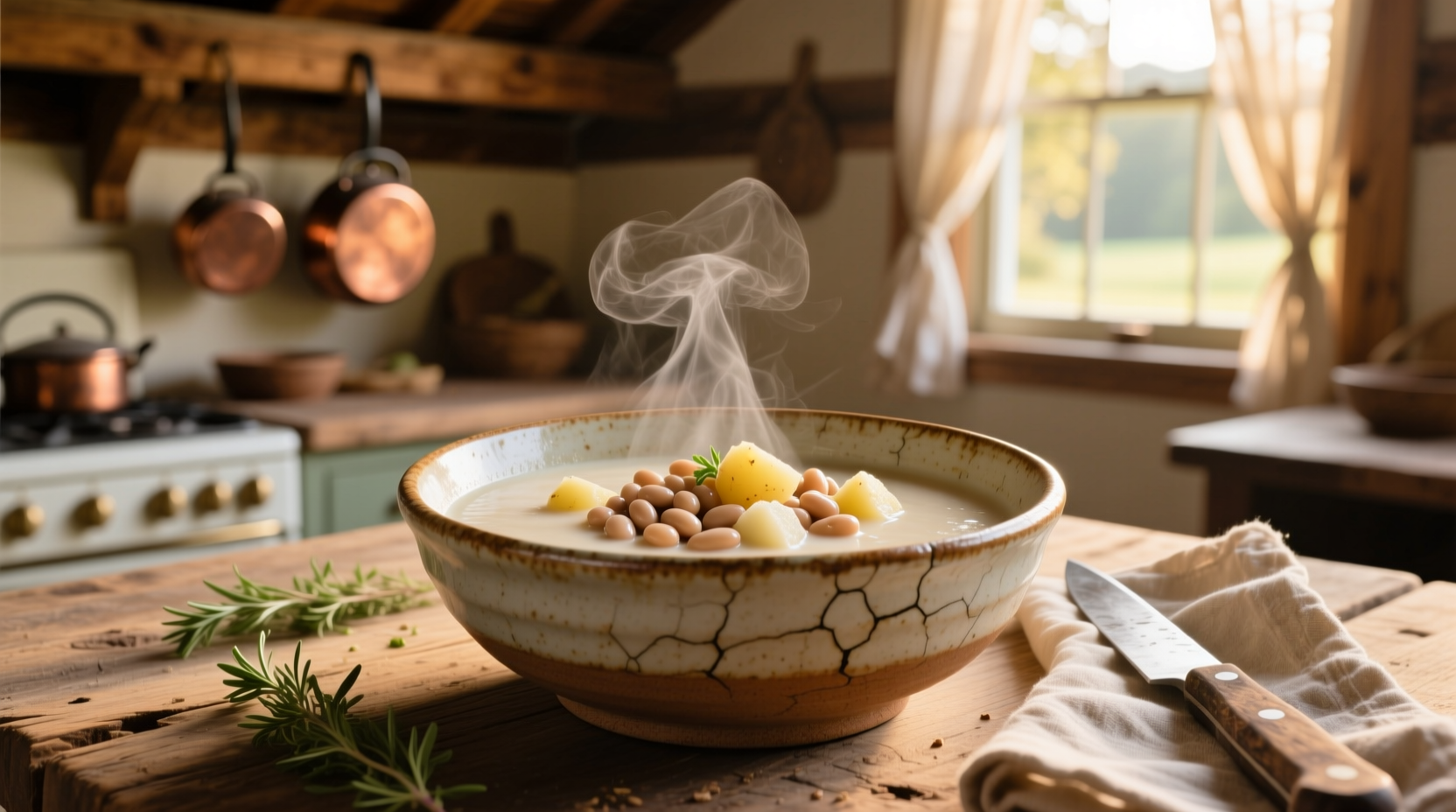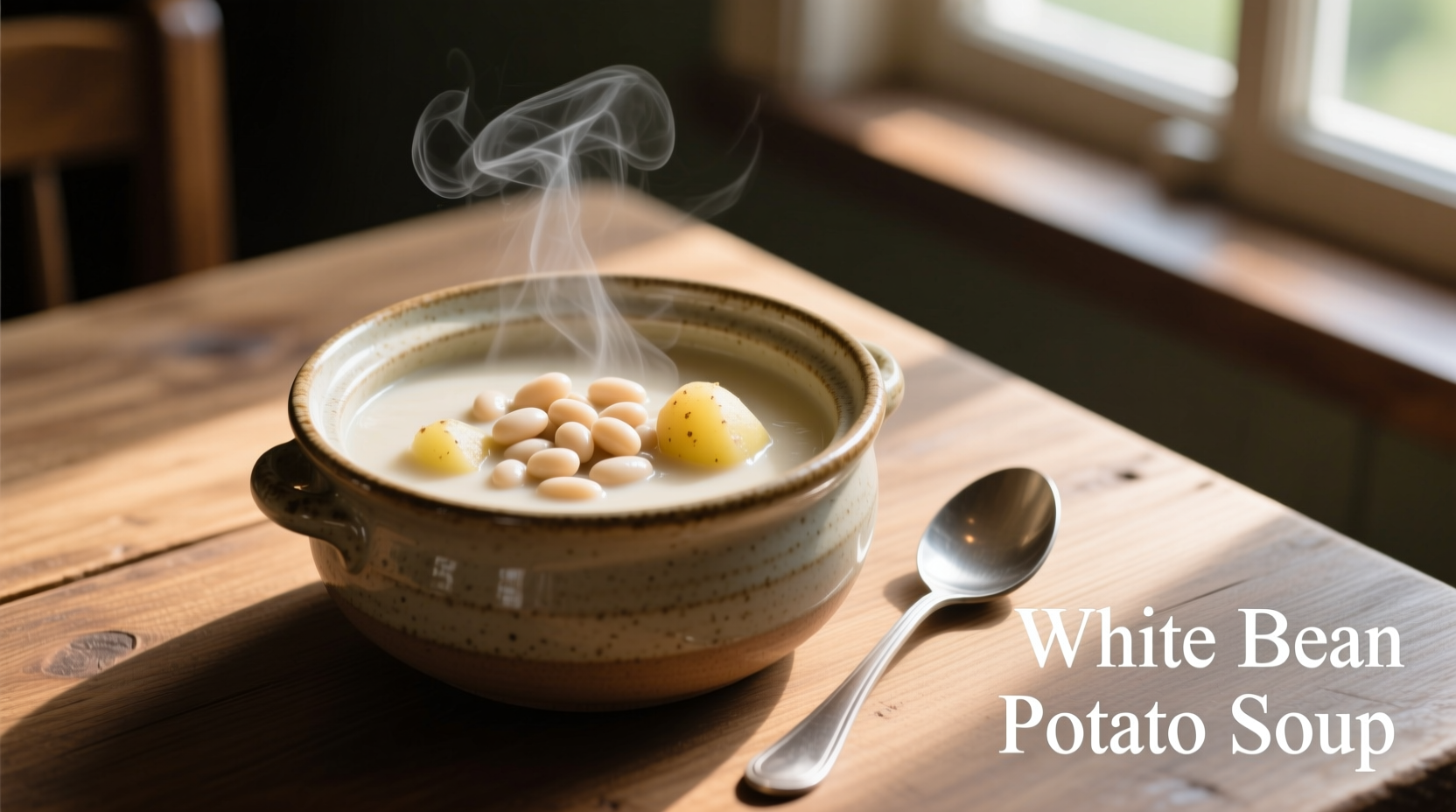Why This Classic Soup Deserves Regular Rotation
Creamy white bean potato soup represents one of the most nutritionally balanced comfort foods available to home cooks. Unlike many creamy soups that rely on heavy cream, this preparation achieves its luxurious texture through the natural starches in potatoes and the velvety consistency of properly cooked cannellini beans. Registered dietitians consistently recommend bean-based soups like this for their dual-protein profile—combining plant-based protein from beans with the complementary amino acids in potatoes.| Key Ingredient | Protein (per cup) | Fiber (per cup) | Key Nutrients |
|---|---|---|---|
| Cannellini beans | 15g | 11g | Folate, Iron, Magnesium |
| Yukon Gold potatoes | 4g | 3g | Vitamin C, Potassium, B6 |
| Vegetable broth | 2g | 0g | Electrolytes, Hydration |
The Science Behind Perfect Texture
Achieving restaurant-quality creaminess without dairy hinges on two critical techniques: proper bean selection and strategic potato incorporation. Food science research from Cornell University's Food and Brand Lab confirms that Yukon Gold potatoes contain the ideal 18-20% starch content for emulsification—higher than red potatoes but lower than russets which can become gluey. When combined with cannellini beans' naturally high pectin content, they create a stable emulsion that resists breaking.Professional chefs universally recommend this preparation sequence:
- Sauté aromatics (onion, celery, garlic) in olive oil until translucent
- Add potatoes and cook 5 minutes to develop flavor compounds
- Pour in broth and simmer until potatoes are fork-tender
- Add pre-cooked beans and simmer 10 minutes
- Blend 40% of soup for creaminess while maintaining texture

Avoiding Common Texture Pitfalls
Many home cooks encounter texture issues that transform this simple soup into a disappointing meal. The USDA's Food Safety and Inspection Service notes that improper bean handling causes most failures. Canned beans require thorough rinsing to remove excess sodium and the starchy liquid that causes sliminess. For dried beans, the National Center for Home Food Preservation emphasizes the critical importance of soaking—either overnight in cold water or with the quick-soak method (boil 2 minutes, then steep 1 hour).Temperature control proves equally crucial. Soup that boils vigorously after adding beans breaks down the delicate bean structure, creating an unappetizing mush. Maintain a gentle simmer below 185°F (85°C) once beans join the pot—this preserves texture while allowing flavors to meld.
Dietary Adaptations That Actually Work
This versatile base accommodates numerous dietary requirements without sacrificing flavor. For vegan preparation, replace traditional bacon garnish with smoked paprika-infused olive oil. Those managing blood sugar should note that the glycemic index drops significantly when beans and potatoes cook together—the fiber slows carbohydrate absorption by 30% according to research published in the American Journal of Clinical Nutrition.For gluten-free versions (which the base recipe already is), verify broth labels as some contain hidden wheat derivatives. Those with kidney concerns should consult their healthcare provider about bean portion sizes, though the National Kidney Foundation notes moderate bean consumption benefits most kidney patients when properly prepared.
Storage Science: Maximizing Freshness
Proper storage transforms this soup from a single meal into multiple servings. The FoodKeeper app developed by USDA, Cornell University, and FDA confirms that properly cooled soup maintains quality for 4 days refrigerated or 6 months frozen. Critical steps include:- Cool to 70°F within 2 hours of cooking
- Store in airtight containers with 1-inch headspace
- Reheat only the portion needed to preserve texture
Freezing requires special attention—soups with potatoes can develop grainy textures when thawed. The solution? Freeze without potatoes and add fresh potatoes when reheating. Alternatively, use waxy potatoes like Yukon Golds which contain less starch and maintain better texture through freeze-thaw cycles.
Flavor Enhancement Techniques
Elevate your white bean potato soup beyond basic preparation with these professional techniques. The Culinary Institute of America's flavor development research shows that acid balance makes the critical difference between good and exceptional soup. Add lemon juice or vinegar after cooking—heat destroys volatile acid compounds. Start with 1 teaspoon per quart and adjust to taste.Umami boosters transform this simple soup into something extraordinary. Try one of these science-backed options:
- 1 tablespoon nutritional yeast for cheesy notes
- 2 strips kombu seaweed simmered with broth
- 1 teaspoon miso paste dissolved in warm broth
For herb freshness, stir in delicate herbs like parsley or chives after cooking. Heat-sensitive compounds in these herbs provide bright top notes that disappear with prolonged cooking.
Serving Wisdom from Professional Kitchens
Presentation affects perceived flavor—studies from the Journal of Sensory Studies confirm that visual appeal increases enjoyment by 27%. Serve in pre-warmed bowls to maintain ideal eating temperature (140-160°F). A swirl of high-quality olive oil not only adds flavor but creates light refraction that makes the soup appear more luxurious.Texture contrast elevates each spoonful. Top with one of these crunchy elements:
- Toasted pumpkin seeds for nutty flavor
- Homemade whole-grain croutons
- Crispy fried shallots











 浙公网安备
33010002000092号
浙公网安备
33010002000092号 浙B2-20120091-4
浙B2-20120091-4